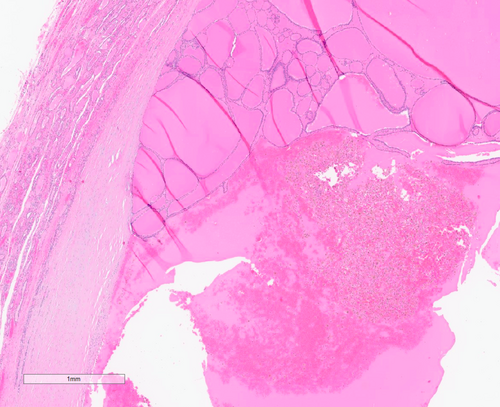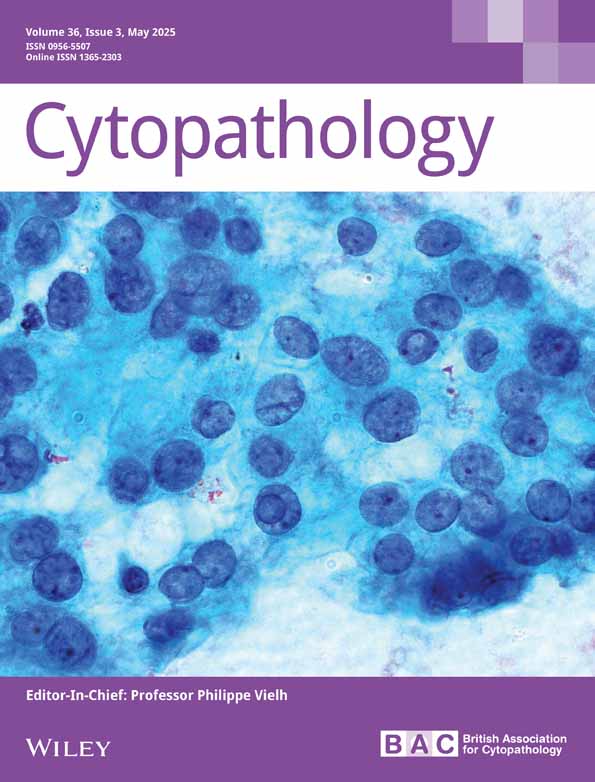Thy1c Cytology Is a Reliable Method of Excluding Thyroid Cancer in Dominant Cystic Nodules
ABSTRACT
Background
Traditional teaching dictated that patients with recurrent thyroid cysts undergo excision owing to a 12% risk malignancy. Ultrasound evaluation now determines management of these patients augmented by fine needle biopsy. In UK, a non-diagnostic category for thyroid cysts (Thy1c) exists, whereas the Bethesda system combines ‘non-diagnostic—cyst fluid only’ into Category I along with paucicellular and acellular results. The aim was to assess the ability of Thy1c cytology to exclude malignancy.
Methods
We undertook a retrospective study of patients undergoing thyroidectomy with Thy1c cytology from analysis of the Unit database. Additionally, we made a retrospective search in our pathology database for reports combining ‘papillary thyroid carcinoma’ with ‘cyst’ or ‘cystic’ and compared histology with cytology.
Results
Between 2003 and 2023 115 patients (97 women, median age 44y, range 16–72) underwent thyroidectomy following Thy1c cytology. Indications for surgery included recurrent cyst (90%); compressive symptoms (9%) and one thyrotoxicosis. In no patient was the primary diagnosis malignant; multinodular goitre was commonest (87.76%); benign cyst (19.16%); follicular adenoma (5.4%) and coincidental pT1a classical papillary thyroid carcinoma (PTC) (4.3%). In the retrospective audit, 61 pathology reports contained ‘PTC’ and ‘cyst’/‘cystic’. The cystic element was in primary tumour (31.51%); nodal metastasis (17.28%) and adjacent benign disease (13.21%). Only 5 (8%) patients had Thy1c cytology; 4 had pT1a tumours and one a benign cyst and a 19 mm PTC.
Conclusion
Thy1c category reliably excludes significant malignancy. For patients with symptomatic cysts, ultrasound assessment and Thy1c cytology can guide the clinician to treat with either ablation or resection without the fear of mistreating a thyroid cancer.
Graphical Abstract
Conflicts of Interest
The authors declare no conflicts of interest.
Open Research
Data Availability Statement
The data that support the findings of this study are available on request from the corresponding author. The data are not publicly available due to privacy or ethical restrictions.





